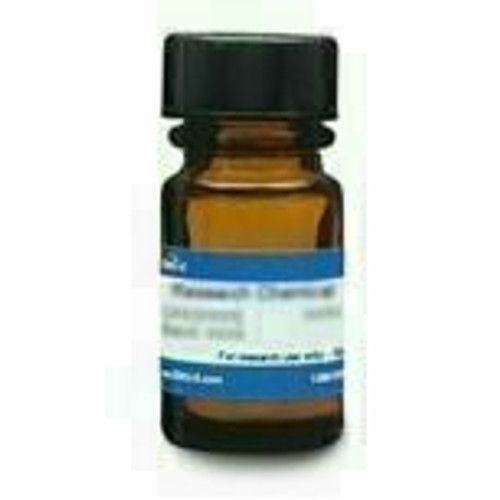Mecillinam is a broad-spectrum β-lactam amidinopenicillin antibiotic belonging to the penicillin class. It was first described in 1972 by F Lund and L Tybring and was developed by the Danish pharmaceutical company Leo Pharmaceutical Products (now LEO Pharma). The compound, a 6 β-amidinopenicillanic acid derivative was originally called FL 1060, is active against Gram-negative bacteria. β-lactams such as mecillinam can be used as genetic probes to uncover the mechanisms for bacterial cell wall production.
Mecillinam is slightly soluble in chloroform.
| Mechanism of Action |
β-lactams interfere with penicillin binding protein (PBP) activity involved in the final phase of peptidoglycan synthesis. PBP’s catalyze a pentaglycine crosslink between alanine and lysine residues providing additional strength to the cell wall. Without a pentaglycine crosslink, the integrity of the cell wall is severely compromised and ultimately leads to cell lysis and death. Resistance to β-lactams is commonly due to cells containing plasmid-encoded β-lactamases. Mecillinam binds to PBP2 over PBP1A/B, PBP3, PBP4 and PBP5/6 in a competitive binding assay with Klebsiella pneumoniae (Thomas et al, 2006). Research using transposon-sequencing (Tn-Seq) as a high-throughput method to identify nearly all Mecillinam resistance loci in the E. coli genome. This technology provides a way to reveal new mechanisms responsible for peptidoglycan (PG) assembly and resistance. The dataset was used to determine the stress response dependence of each resistant locus in the resistome. Authors discovered that overproduction of endopeptidase enzymes that cleave crosslinks in cell wall promotes Mecillinam resistance by stimulating PG synthesis by a subset of PBPs. This means that the endopeptidase activity stimulates the activity of a PBP synthases and the synthases do not need to work in physical contact with the endopeptidases to coordinate PG synthesis as was commonly thought. By studying additional loci it could uncover ways to target the process in the pursuit of new antibiotics (Lai et al, 2017). |
| Spectrum | Mecillinam targets primarily Gram-negative bacteria. It has high in vitro activity against Enterobacteriaceae due to its selective binding to PBP2. It has minimal activity against Gram-positive bacteria. |
| Microbiology Applications |
Mecillinam is commonly used in clinical in vitro microbiological antimicrobial susceptibility tests (panels, discs, and MIC strips) against Gram-negative microbial isolates. Medical microbiologists use AST results to recommend antibiotic treatment options. MIC values include:
|
| Molecular Formula | C15H23N3O3S |
| References |
Lai et al (2017) The Mecillinam resistome reveals a role for peptidoglycan endopeptidases in stimulating cell wall synthesis in Escherichia coli. PLoS Genet. 13(7):e1006934 PMID 28749938 Lund F and Tybring L (1972) 6 -amidinopenicillanic acids -a new group of antibiotics. Nat. New Biol. 236(66):135-137 PMID 4402006 Maioli E, Debbia EA, Gualco L, Marchese A (2008) In vitro interaction between Mecillinam and piperacillin-tazobactam in the presence of azithromycin against members of the Enterobacteriaceae family and Pseudomonas aeruginosa. New Microbiol.31(1):37-46 PMID 18437840 New HC (1976) Mecillinam, a novel penicillanic acid derivative with unusual activity against Gram-negative bacteria. Antimicrob. Agents. Chemother. 9(5):793-790 Pitout JD, Sanders CC, Sanders WE (1997) Antimicrobial resistance with focus on beta-lactam resistance in Gram-negative bacilli. Am J Med 103:51 Sutaria DS et al (2018) First penicillin-binding protein occupancy patterns of β-Lactams and β-lactamase inhibitors in Klebsiella pneumoniae. Antimicrob. Agents Chemother. 62(6):e00282-18 PMID 29712652 |
| MIC | Aeromonas spp.| ≥1|| Bacteroides fragilis (NCTC 9343)| ≥128|| Campylobacter spp.| ≥4|| Enterobacteriaceae| 0.03 - >128|| Escherichia coli| 8 - 16|| Plesiomonas shigelloides| ≥1|| Salmonella spp.| ≥2|| Shigella spp.| ≥16|| |




